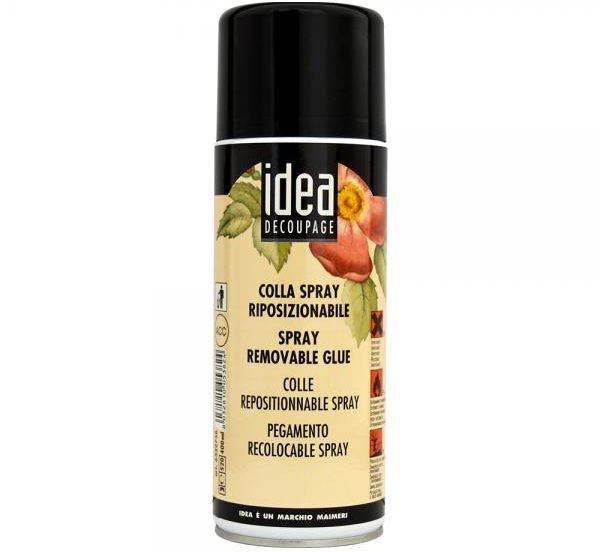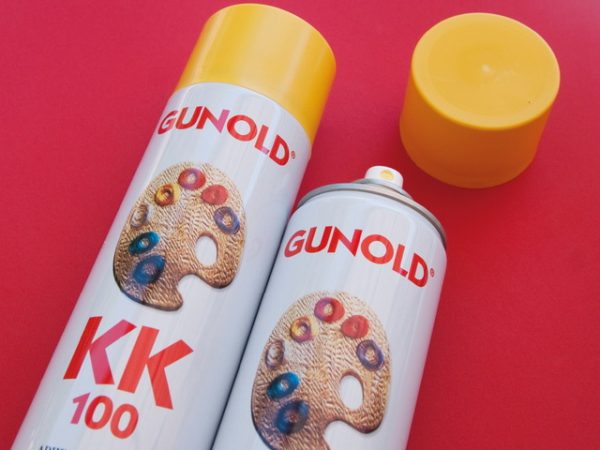In needlework, temporary bonding of parts is often required, for example, to fix the stencil, overlay the template, applique. Especially for those involved in embroidery, quilling or other types of creativity, a glue of temporary fixation was invented. Attached products can be easily torn off if necessary.
- History of glue
- Properties and applications
- Terms of Use
- Popular adhesives for temporary bonding
- Making glue at home

History of glue
Adhesive for temporary fixation or adhesive tape is an innovative product of the chemical industry that allows for the intermittent connection of parts without harming or spoiling the appearance of basic materials. Its production was made possible thanks to the invention of new components that do not react with fabric, paper, or other bases. Such adhesives do not absorb into the fibers of the material and do not stain.
Before the glue was created, needlewomen used less convenient methods of securing patterns and decorative elements - they fastened them to masking tape, pinned them with needles, pins. This led to the appearance of ugly sticky traces, holes in the fabric and other materials. Now adhesive glue, which is produced by many well-known brands, is used everywhere, and you can buy it in any hardware store or department of goods for creativity.
to contents ↑Properties and applications
Since the application of glue does not cause loss of attractiveness of the product, it can be used in a wide variety of cases. It is great for cardboard, paper, polymers, foil, textiles, foam rubber, as well as:
- sisal;
- polystyrene foam;
- beads;
- fittings;
- thread, yarn;
- Wool
- foamirana;
- ribbons, lace;
- floristic decor;
- polyethylene;
- Photos
- napkins.
Most often, temporary glue is used for fabric with the aim of creating patterns, fixing patterns, stitching zippers, processing the crumbling edge of the fabric. The use of glue reduces time costs, reduces the number of defective products, the result is beautiful, accurate.
Needleworkers working in the patchwork technique appreciate temporary adhesives for the possibility of attaching yarn and threads to fabrics with further stitching. Then the product is washed and the glue dissolves. It is very convenient to attach stencils to glue for a short time, and then easily remove them.
Other areas of application of the product:
- minor repairs in the home;
- design work, interior decoration;
- decoration of furniture, windows, curtains, curtains, doors;
- decoration of rooms for the holiday;
- creation of complex decor and appliqués on the fabric;
- art activities;
- furniture manufacturing, assembly of individual units and fastening of small elements;
- some operations in electronics, engineering, light industry;
- production of promotional materials;
- creation of wall newspapers, posters, thematic stands and exhibitions.
Glues are more often sold in the form of sprays, although there are other types of them.The aerosol form is very convenient to use, because it is enough just to spray the adhesive on the product. You can peel off the parts several times, which is very convenient when fitting. Most temporary fixation adhesives are resistant to freezing, waterproof, colorless, odorless. Some formulations require subsequent mechanical removal or washing, others evaporate over time.
to contents ↑Terms of Use
Before starting work, you need to clean, dry the base. If it is a fabric, it should be clean, even (ironed). The glue in the aerosol should be shaken well for 10 seconds and at a distance of 20 cm from the surface, perform the following actions:
- spray glue on the material with a thin layer, accurately determining the direction of the jet and not capturing unnecessary areas (to do this, turn the spray gun to the mark that the manufacturer made on the neck);
- if you bring the container with glue close to the fabric or other material, the stream will turn out to be too concentrated;
- wait 1-2 minutes, then lean the part, the stencil, application or other product on the main surface, press firmly, preventing glue from leaking and moving the part;
- glue should not be applied to the second surface; it is enough to cover only one side of the joint;
- elements can be glued an unlimited number of times - the mass will be sticky before solidification.
When working with glue with your own hands, you need to pay attention to safety measures. Aerosols are easily flammable, so any action with them is carried out away from sources of fire. You can not store the product so that it is not exposed to sunlight, the glue may deteriorate. Work must be in a well-ventilated area, wearing a respirator. This will help to prevent the inhalation of glue vapor and the entry of the finest atomized particles into the lungs. If glue has dripped onto the skin, it must be washed under cool water and soap. In case of contact with eyes, in addition to rinsing, consult a doctor!
to contents ↑Popular adhesives for temporary bonding
Glues can be realized in the form of a spray, aerosol and in pads. The spray is ideal for leather, velvet, knitwear, it provides temporary fixation of patterns and stencils. A blank with such glue can be re-glued several times. If the product will be machine-flashed, it is important that the glue does not clog the needle hole, otherwise the latter may deteriorate.
Aerosol adhesives are more convenient to use when working with stencils and blanks from cardboard, glass, paper, wood. Funds are quickly distributed over the surface without forming lumps, and the layer is very thin. Temporary adhesives in pillows are usually used to decorate rooms for holidays, festive events, and they can also be used to fix patterns, calendars, posters, garlands for a short time. More expensive pads are used repeatedly, because they do not lose their adhesive properties for a long time.
Also, temporary adhesives are divided into special and universal. The first are intended for fixing only one group of materials - textiles, derivatives of wood and cellulose, glass, etc. Universal are suitable for any surfaces and can be applied in such ways:
- fixing until the product is washed;
- one-sided mounting with the possibility of correction;
- double-sided mounting for a longer period.
The most popular brands of adhesives for temporary bonding are as follows:
- 3M Scotch Weld. The aerosol is suitable for bonding dissimilar and homogeneous materials, and allows multiple bonding. Great for labels, silk screen printing, does not warp paper, does not harden over time.
- Marabu-Fix it. Colorless spray for cardboard, wood, paper and plastic. It is also used to fix fabric during decoration.
- Prim. Provides temporary fixation of textiles, eliminates the need for pins.It is washed off without residue with plain water.
- Idea Decoupage. Made in Italy, is of high quality. It helps to repeatedly attach and remove film, fabric and cardboard images, stencils. Widely used in design.
- KK. Transparent non-toxic glue, used for attaching non-adhesive non-woven, small parts that are difficult to secure with the embroidery frame. Suitable for knitwear and elastic materials.
- UHU Tac Patafix PROPower, heavy-duty pads for temporary fastening. Able to hold objects weighing up to 3 kg, suitable for internal and external surfaces. Resistant to moisture, not affected by UV rays. They can be used repeatedly.
Making glue at home
It will not be possible to make such a glue personally. Most manufacturers keep the composition of non-drying glue a secret, but, in any case, it is a complex product of the chemical industry. It is possible to obtain glue with similar properties only in production conditions with knowledge of the formulation. Therefore, it is better to go to the nearest store for creativity and purchase the necessary composition, especially since all temporary adhesives are very economical in consumption and will not increase the cost of products too much.









